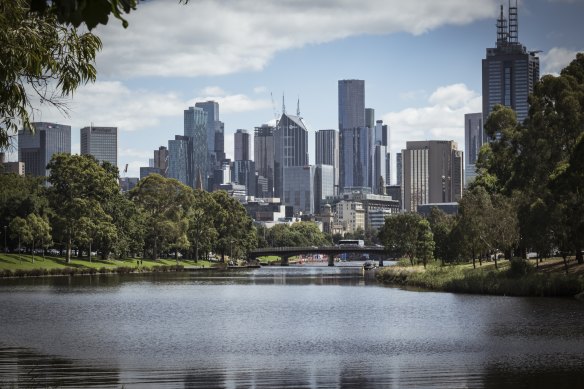This was published 1 year ago
Opinion
Melbourne’s second CBD: Agree on a vision and count the journey in decades
Halvard Dalheim
City plannerLast week’s Second CBD series in The Age raises some interesting questions about the aspirations and vision for Melbourne.
The series rightfully asks how the Suburban Rail Loop creates opportunities for the suburbs along its route to be considered as a second CBD. Behind these opportunities are two wider considerations.
The first, what is the long-term vision for Melbourne? In that, the current plan for Melbourne (Plan Melbourne, a government strategy released in 2014 and updated in 2017) does not include the Suburban Rail Loop, nor does it suggest that a few suburbs should have primacy.
The second is simple, how do we get there? Let’s consider this a little.
When thinking of a second CBD we need to explain what we mean. Is it a smaller version of the Melbourne CBD, or are we looking at more specialised functions for the new CBD? Each of the options discussed in the Second CBD series – Clayton, Box Hill and Sunshine – have differing strengths, which could be the building blocks for a new future.
When considering a function for a new second CBD it is worthwhile reflecting on the investments of governments across the CBDs of Melbourne, Sydney and Brisbane. Respective state governments have invested billions of dollars to enhance the amenity and provide cultural, entertainment and other attractions. For a second CBD in Melbourne, there is a need to consider what investments in public infrastructure would enhance its attractiveness to Melburnians.

Long-term commitment will be vital to planning and building Melbourne’s second CBD.Credit: Chris Hopkins
This raises the question of which community the second CBD would serve. A lesson learnt from the current plan for Greater Sydney was to move away from a “predict and provide” future (those who have, get more) to one that is about “vision and validate”. It starts with the notion of identifying the best transport and land use future for the entire community in 2056, and then following the best pathway to deliver that future. The future is not simply about the least economic cost.
The suburbs nominated for consideration in The Age’s series have different strengths and opportunities. This hints at a key requirement for a successful delivery in Melbourne: reaching a consensus on the location of the second CBD and then ensuring all government departments and agencies – be they health, transport or other – collaborate on future investments to reinforce the plan.
Equally important, the vision needs the support of successive governments over decades. Sydney first identified Parramatta as its second CBD back in 1968 and that status has remained in successive plans. On the other hand, there has been no consistency in the Melbourne preference over the past three decades.
The quality and experiences available along the corridor from the MCG to the Exhibition Building, on the south side of the Yarra River, demonstrate the benefit of consistent decisions in investments over a long period. Similarly, the approach to building a second CBD must address the amenity of a place and the variety of cultural, entertainment and recreational activities commensurate with creating a sense of place.

An artist’s impression on turning Parramatta into Sydney’s second CBD.
Such investments could be used to create a vibrant urban heart in a location such as the Monash precinct, one of the suggested locations.
Lastly, delivering jobs closer to home, to negate the long commute, is an underlying narrative in the CBD series. Planners need to recognise that our actions cannot create jobs. A range of actions must make a location more attractive for businesses and investment. This includes allowing for growth in a centre, and if we are talking about a second CBD, that means harbouring significant growth.
The amenity of a place will influence its attractiveness for many businesses, such as those involved in the knowledge economy. In attracting knowledge jobs, it is important to remember they are “footloose” – they can operate anywhere. Thus, recognising a location’s strengths and opportunities can be leveraged, such as the CSIRO and Synchrotron at Monash or the hospitals at Box Hill.
A final point: Melbourne is not Sydney, nor London or New York. Identifying the best future can heed lessons from those cities, but Melbourne must draw on its strengths and opportunities, the aspirations of its community and count the journey in decades not years.
Halvard Dalheim is a city planner, formerly the executive director responsible for the preparation of the Greater Sydney Region Plan: A Metropolis of Three Cities.
The Opinion newsletter is a weekly wrap of views that will challenge, champion and inform your own. Sign up here.